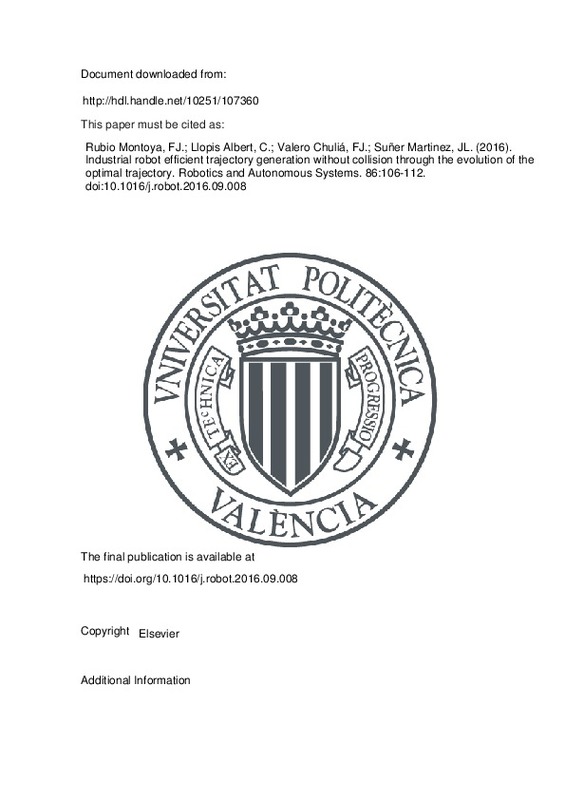JavaScript is disabled for your browser. Some features of this site may not work without it.
Buscar en RiuNet
Listar
Mi cuenta
Estadísticas
Ayuda RiuNet
Admin. UPV
Industrial robot efficient trajectory generation without collision through the evolution of the optimal trajectory
Mostrar el registro completo del ítem
Rubio Montoya, FJ.; Llopis Albert, C.; Valero Chuliá, FJ.; Suñer Martinez, JL. (2016). Industrial robot efficient trajectory generation without collision through the evolution of the optimal trajectory. Robotics and Autonomous Systems. 86:106-112. https://doi.org/10.1016/j.robot.2016.09.008
Por favor, use este identificador para citar o enlazar este ítem: http://hdl.handle.net/10251/107360
Ficheros en el ítem
Metadatos del ítem
| Título: | Industrial robot efficient trajectory generation without collision through the evolution of the optimal trajectory | |||
| Autor: | ||||
| Entidad UPV: |
|
|||
| Fecha difusión: |
|
|||
| Resumen: |
[EN] An efficient algorithm is presented to obtain trajectories for industrial robots working in industrial environments. The procedure starts with the obtaining of an optimal time trajectory neglecting the presence of ...[+]
|
|||
| Palabras clave: |
|
|||
| Derechos de uso: | Reserva de todos los derechos | |||
| Fuente: |
|
|||
| DOI: |
|
|||
| Editorial: |
|
|||
| Versión del editor: | https://doi.org/10.1016/j.robot.2016.09.008 | |||
| Código del Proyecto: |
|
|||
| Agradecimientos: |
|
|||
| Tipo: |
|







![[Cerrado]](/themes/UPV/images/candado.png)


